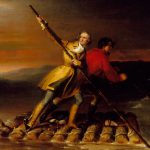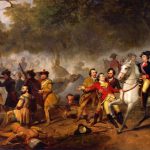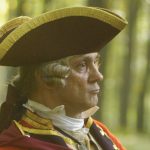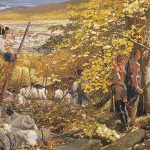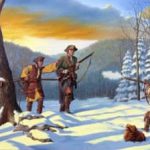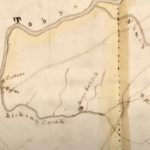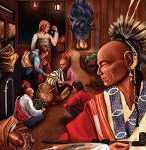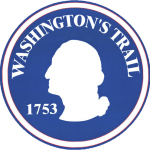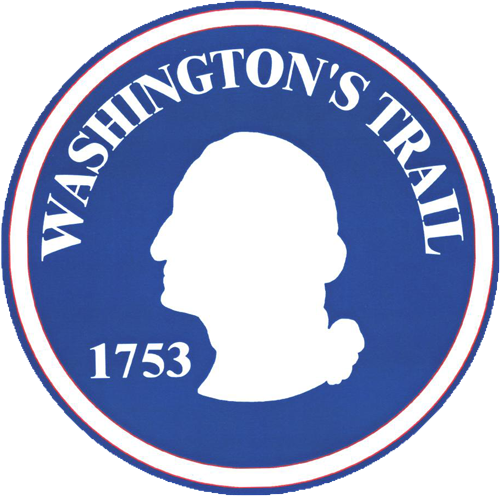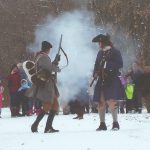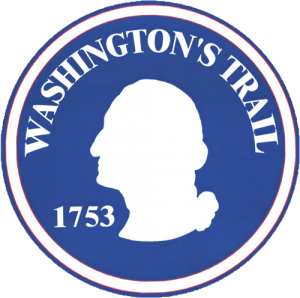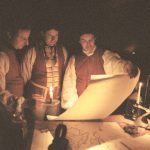Learn
Washington
Washington's Trail
George Washington travels Nemacolin’s Path from present-day Cumberland, MD to the Forks of the Ohio. The path, as it continues north, becomes known as Washington’s Trail.
When George Washington first entered the Ohio River Valley in 1753 he was only 21 years old. Recently commissioned as a major in the Virginia Regiment, he came to the region to deliver a diplomatic note to the French at Fort LeBoeuf (present-day Waterford, Pennsylvania) ordering them to withdraw from lands claimed by the King of England and the colony of Virginia. Needless to say, the French commander did not feel “obliged to obey” Washington’s summons to depart and the young Virginian headed home to prepare for war. On his return trip, Washington got his first taste of gunfire when an Indian guide, who was aligned with the French, turned and fired at him from point-blank range. Fortunately, for the sake of America, the bullet missed.
Washington came back to the forests of Pennsylvania the following spring, again following Nemacolin’s Path. He tasted short-lived victory at Jumonville Glen and bitter defeat at Fort Necessity. In the aftermath of the Fort Necessity defeat, Virginia’s governor, Robert Dinwiddie, decided to reorganize his battered regiment into ten independent companies, with no officer holding a rank higher than captain. This meant that Colonel Washington would have to face demotion. Rather than accept such humiliation, the young Virginian resigned from the army. For a short period of time, it seemed as if Washington would never again don a military uniform.
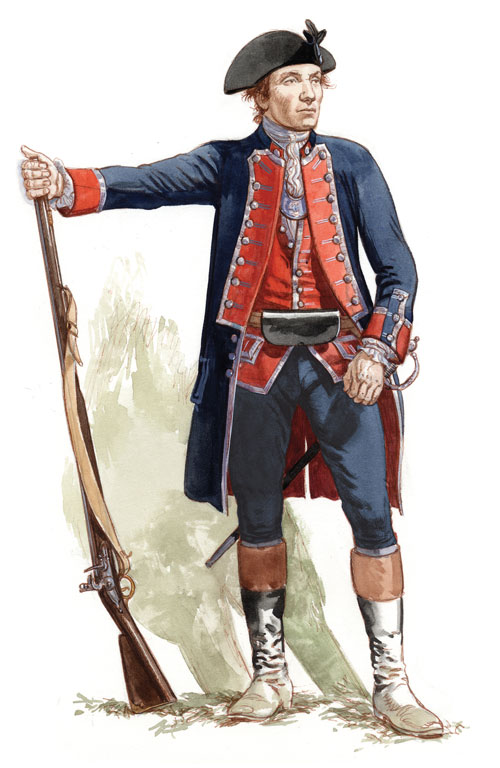
Braddock
Braddock's Road
Washington joins Braddock – Nemacolin Path becomes known as Braddock’s Road.
Then, in the spring of 1755, General Edward Braddock came to America to push the French from the Ohio Country and back to Canada. Eager for redemption and “to attain a small degree of knowledge in the Military Art,” Washington offered his services to the general. Braddock replied that he would “be very glad” to take on the young Virginian as an aide. This led Washington back to the frontier and his next brush with death at the Battle of the Monongahela.
By all accounts, Washington’s behavior at the horrifying debacle was exemplary. According to one account, the fearless officer rode into the thick of the battle and attempted to rally the Virginia troops who were being shot down not only by the enemy, but from the frightened Redcoats who fired wildly at anything that moved. Sensing that the soldiers were in an exposed position, Washington rode forward and cried out to his men, “Boys! Take to the trees!” Braddock, who was riding nearby took the command as an act of cowardice instead of common sense. He lifted his saber and bellowed out, “I’ve a mind to run you through the body. We’ll sup today in Fort Duquesne or else in Hell!” After the general was severely wounded, it was Washington who organized the retreat and saved the remnants of Braddock’s shattered command. Just before he died, General Braddock was heard to mutter the prophetic words, “We shall know better how to deal with them [the enemy] another time.”
After Braddock’s defeat at the Monongahela, the British army went into winter quarters and the provinces were forced to fend for themselves against the sporadic raids launched against the frontier by the French and Indians. Restored to rank, Washington spent the next three years struggling to defend the backcountry. Plagued by a lack of supplies with his command threatened by desertion and insubordination, the young warrior bitterly complained, “I have been posted… for twenty months past upon our cold and Barren Frontiers, to perform I think I may say imposibilitys that is, to protect from the cruel Incursions of a Crafty Savage Enemy a line of Inhabitants of more than 350 Miles in extent with a force inadequate to the taske.” Despite such hardships, Washington held on until the spring of 1758, when General John Forbes and his army finally brought a promise of redemption.
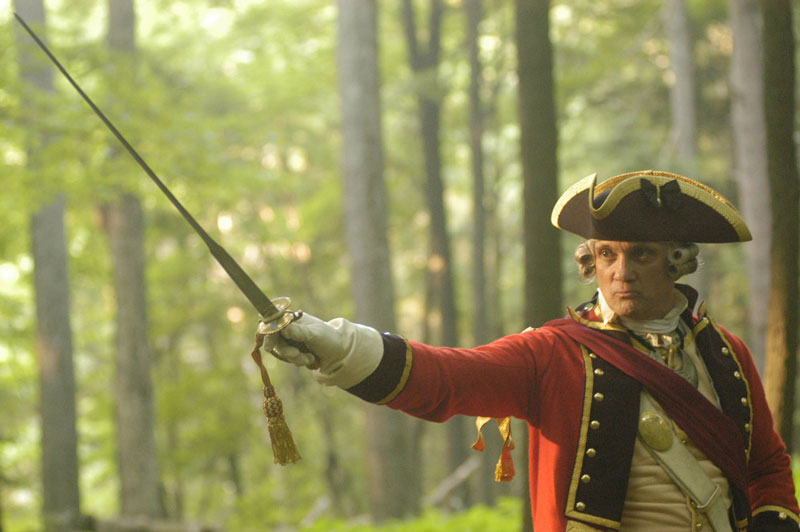
Forbes
Forbes' Trail
Washington joins General Forbes and a new road is cut.
In 1758 the French held control of Fort Duquesne and the Forks of the Ohio. General Forbes’ route from Philadelphia to the Forks of the Ohio to seize control from the French required cutting a path to build a road over mountains and through over 300 miles of wilderness. Meanwhile, Colonel George Washington and his troops from Maryland and Virginia traveled Braddock’s Road from the Potomac and planned to meet Forbes’ army in Cumberland, MD to reach the Forks. But Forbes was intent on the more direct route so he pushed forward, cutting a new road over the mountains.
Washington and his troops had no choice but to join with Forbes as they advanced over Laurel Ridge to arrive at Loyalhanna Creek.
